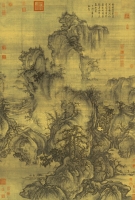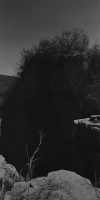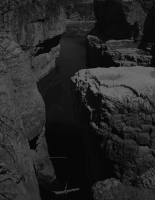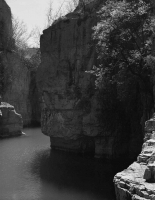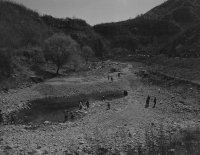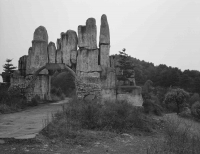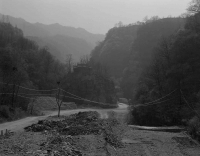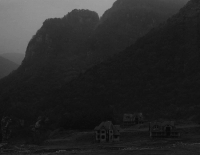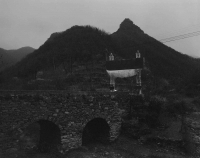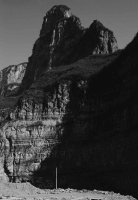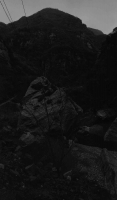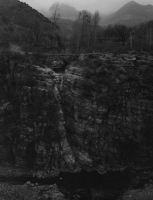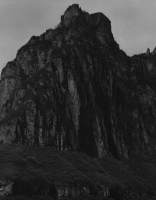林泉高致考
Real Shanshui-The study of Ambitions in Forests and Springs
2018—未完成
宋代山水画大师郭熙《山水训》篇言:“林泉之志,烟霞之侣,梦寐在焉,耳目断绝。”意即山水作为一种至高的理想,连做梦时都在,只不过被耳目所隔绝了。所谓林泉高致在当下就真的像梦,世人的耳目早已与之隔绝。我在郭熙当年写生出没的山中,试图打开被隔绝的耳目,直抵林泉之梦的真实。这些自然的山石林泉,历经千年,早已渐化为人的生活场域,尤其在当下之粗鄙的世俗生活,梦寐以求的林泉之志也从文人的理想想像,跌落粉碎为一地鸡毛。我的慕古追思,只能在沾染灰尘的粗颗粒底片上显影成一种白夜般的暗黑,在摄影中我的耳目尚未断绝,也许在这个时代,摄影才是最适合描绘林泉高致的笔墨。
The great master painter Jing Hao of the Five Dynasties considered painting as “observations of the objects and reflections on its truthfulness (zhen).” He commented on the painting’s capability of completing a verisimilitude representation, through which the observers would be able to gain the inner truth of the exterior. The truthfulness claimed by Jing Hao could be understood as one’s philosophical reflection or emotions toward the world, not restrained to its objective reality. The difference between the Chinese paintings of mountains-and-waters (shanshui) and the so called landscape painting is that the former expresses a transcendent experience that is more universal and would go far beyond the realistic representations and one’s visual experiences.
My series of Real Shanshui continues the artistic practice of studying and copying the master works of past, following the method that roots deeply in the tradition of Chinese art. Through the medium of photography, I am able to revise the lineage of mountains-and-waters paintings established by the ancient masters, and conduct my own research and expeditions to the actual sites appeared in their paintings. By copying and imitating the views depicted by them, I attempt to deconstruct the master works while reconstructing my own versions out of the work of deconstruction.
Wen Fong considers art history as a part of history; Benedetto Croce claims that all history is contemporary history. My aim is write and add my own contemporary notes to the great tradition of the paintings of mountains-and-waters in Chinese art.

